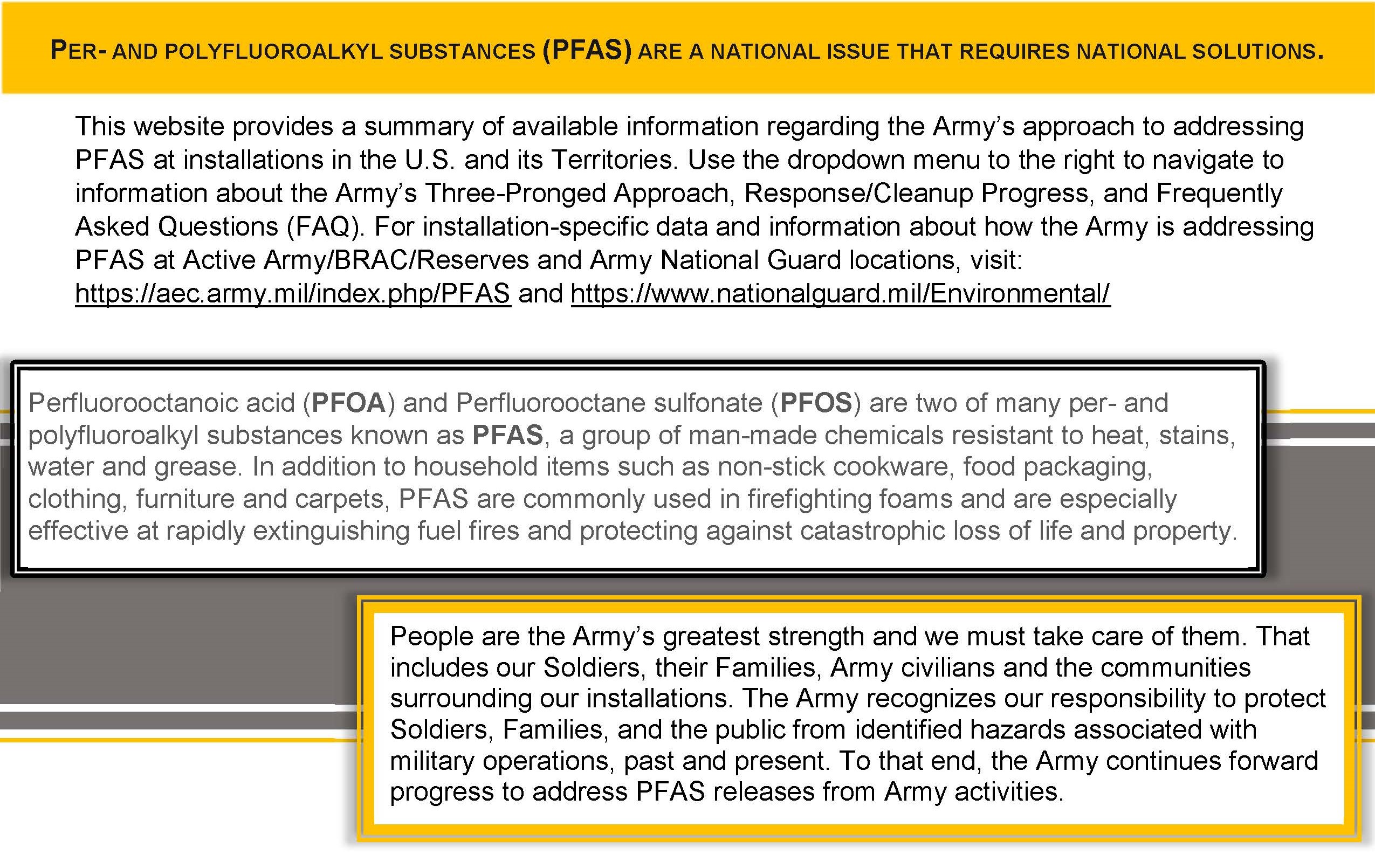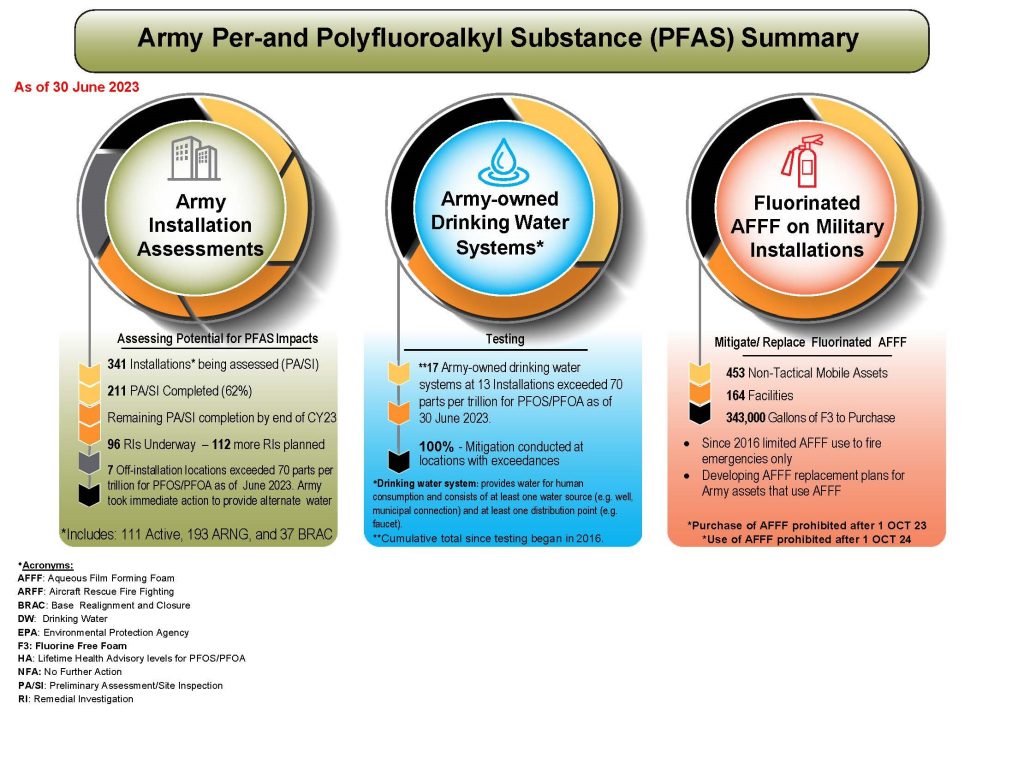ARMY PFAS PROGRAM STATUS


RESOURCES FOR ADDITIONAL INFORMATION
Army and DoD PFAS Policy and Guidance
Active Army, Army Reserve, Base Realignment and Closure (BRAC), and non-BRAC excess
https://aec.army.mil/index.php/PFAS
Army National Guard
https://www.nationalguard.mil/Environmental/
Department of Defense Per- and Polyfluoroalkyl Substances (PFAS)
https://www.defense.gov/Explore/Spotlight/pfas/
